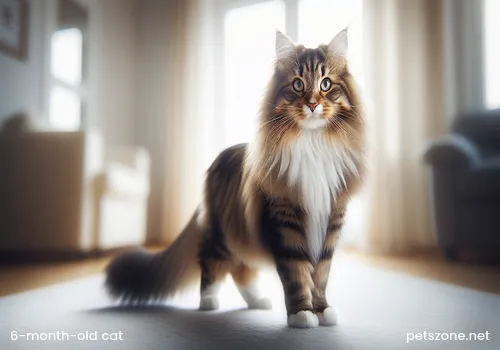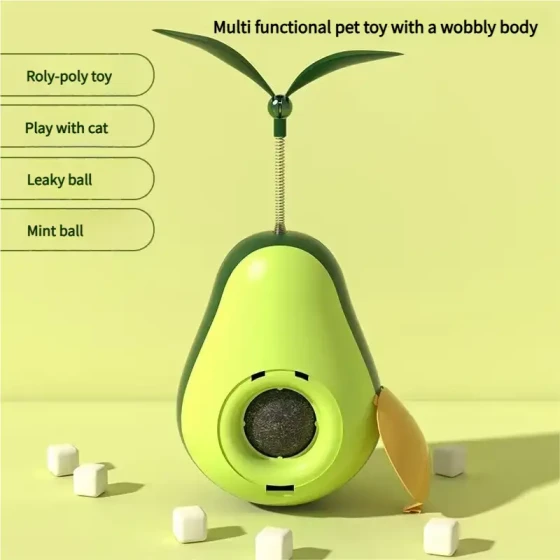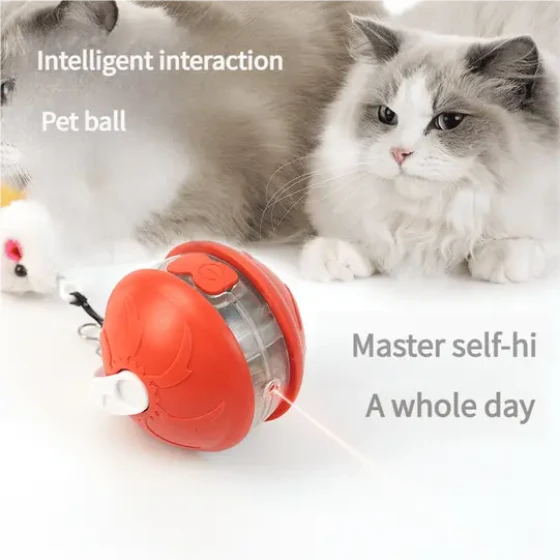Is a 6-month-old cat an adult_cat kitten growth stage full analysis
A 6-month-old cat, although it may have reached sexual maturity, is not truly an “adult cat” in the full physiological and psychological sense. They are in a rapid growth phase, where behavior and personality gradually take shape in the “adolescence” period, more accurately called “subadult cats.” Understanding the stages of cat growth is essential for providing appropriate care and building a strong human-cat bond.

The “Age Code” of Cats: Unlocking the Stages of a Cat's Life
Understanding a cat’s growth is like decoding a mysterious “age code,” with each stage having unique characteristics and needs. Unlike humans, cats have a shorter lifecycle and grow faster. Generally, we can divide a cat’s growth into several main stages:
- Neonatal/Newborn Period (0-4 weeks): Newborn kittens with their eyes closed, fully dependent on their mother for nursing and grooming. They gain weight rapidly, mainly eating and sleeping. Kittens at this stage are very fragile and require warmth, quiet, and intense care.
- Kitten Period/Early Socialization (4-8 weeks): At this stage, kittens’ eyes and ears are fully open. They start exploring their environment, learning to walk unsteadily, trying solid food, and beginning basic socialization skills like playing with siblings and learning cat body language. This is also the crucial window for the first vaccination.
- Juvenile/Fast Growth (8-16 weeks): Kittens enter an active, energetic stage with overflowing curiosity. Their bodies develop rapidly and lengthen. Vaccinations are usually completed during this phase. It is the golden period for socialization training, requiring plenty of toys and interaction.
- Adolescence/Subadult Period (4-12 months): This is the most dramatically changing stage for cats and the focus of this article. Sexual maturity generally occurs here, but physical and psychological development continues.
- Adulthood (1-7 years): Peak physical function and stable behavior patterns.
- Senior (7 years and older): Physical functions gradually decline, requiring special care and more attention.
Is a 6-month-old Cat Really “Adult”?
Back to the core question of the article: Is a 6-month-old cat an adult? The answer is no.
Although many cats reach sexual maturity around 6 months, meaning they are capable of reproduction and might display estrus behaviors (such as calling in female cats, spraying marking in males), sexual maturity does not equal full maturity. We can compare a 6-month-old cat to a human “teenager” — their body is developing quickly but they are still far from true adulthood, both physically and mentally.
Physiologically: While their weight and height may be close to adult cats, their bones, muscles, internal organs, and immune system are still developing and improving. For example, their growth plates may not be fully closed and bone density is still increasing. Feeding them adult cat food too early may cause nutritional imbalance affecting their final development.
Psychologically: A 6-month-old cat is still a curious and energetic “mischievous kid.” They may retain kitten-like playfulness and impulsiveness, and their behavior is not as calm or predictable as adult cats. Their social learning, environmental adaptability, and personality stabilization need time to mature. Cats at this stage require ongoing guidance and training to develop good habits and emotional stability. For example, they may still be learning how to play appropriately (avoiding excessive scratching and biting), and how to get along peacefully with humans and other pets.
Therefore, it is more accurate to define a 6-month-old cat as a “subadult.” They are in the critical transition period from kitten to adult, possessing both kitten vitality and emerging adult traits.
Care Tips for Cats at Different Growth Stages
Understanding the needs of different growth stages helps provide the best care for healthy and happy development.
1. Nutrition: A Customized "Cat Food Recipe"
- Neonatal Period (0-4 weeks): Exclusive breastfeeding is the best. If the mother cat is absent, specialized kitten milk replacer should be used, following the principle of small frequent feedings.
- Kitten Period (4 weeks to 12 months): This is the fastest growth period, requiring high-protein, high-fat, vitamin and mineral-rich kitten food. Kitten food has a higher energy density needed for rapid development. Do not substitute adult cat food, as it can cause nutritional deficiencies affecting bone and immune system development. Remember, while a kitten’s appetite can seem bottomless, quantity should be appropriate; small, frequent meals are the key.
- Adulthood (over 12 months): Gradually transition to adult cat food. Adult formulas have more balanced nutrition to maintain healthy adult cat body and condition. Choose formulas according to activity level and physique (e.g., indoor formula, weight management).
2. Health: Vaccination, Deworming, Neutering—all are essential!
- Vaccinations: Kittens typically start their first three-in-one vaccine at about 8 weeks old, followed by 2-3 booster shots as recommended by the vet, then annual boosters. Vaccines effectively prevent deadly diseases such as feline distemper, rhinotracheitis, and calicivirus.
- Internal and External Deworming: Kittens are more vulnerable to parasites due to weaker immunity. Vets will recommend regular deworming starting around two months of age, done periodically.
- Neutering: For non-breeding pet cats, neutering is a responsible choice. Male cats are usually neutered at 6-8 months old, females are recommended to be neutered before their first heat (also around 6-8 months). Neutering prevents unwanted pregnancies, reduces heat-related behavior problems (like calling, spraying), and lowers risks of some reproductive diseases (e.g., pyometra, mammary tumors in females, testicular tumors in males).
3. Behavior: Socialization, Play, and Environmental Enrichment
- Socialization Training: Kitten period is critical for social learning. Exposing kittens to different people, sounds, environments, and gentle pets helps build security and reduces stress and aggression as adults.
- Play and Exercise: Play is essential at every stage, especially for kittens and subadults. They have abundant energy and need enough toys and interactive games to expend it, preventing destructive behavior caused by boredom. Wand toys, laser pointers, and small balls are good choices.
- Environmental Enrichment: Providing cat trees, scratching posts, hiding spots satisfies natural instincts to climb, scratch, and hide. This improves quality of life and reduces furniture damage.
How to Tell if a Cat is Fully Grown?
Although 12 months is generally considered the adult cut-off, each cat matures at its own pace. Beyond age, you can use these signs:
- Stable size and weight: Growth slows down, and if weight and body size remain consistent for a period, bone development is likely mature.
- Stable behavior patterns: Adult cats are usually calmer and more regular in routine, adapting better to the environment. Impulsiveness and excessive play decrease, replaced by more mature and predictable behavior. Cats still keep their innate liveliness and curiosity.
- Sexual behavior stabilizes post-neutering: Neutered cats show reduced or eliminated heat-related behaviors.
Common Questions and Answers
Q1: What is the best age to neuter a cat?
A1: Usually recommended after sexual maturity but before the first heat, generally around 6-8 months. Consult your vet for the best timing based on your cat’s individual circumstances.
Q2: Can kittens eat kitten food forever?
A2: Not recommended. Kitten food is formulated with higher energy and nutrients for rapid growth; long-term feeding to adults may cause excess nutrition and obesity. Transition to adult food gradually after 12 months.
Q3: My cat is 6 months old but still acts like a “little goof,” is that normal?
A3: Very normal! Six-month-old cats are in “adolescence,” energetic but still mentally developing. Some behaviors may seem silly or impulsive. They are still learning and exploring; patience and proper guidance are key.
Q4: Why does my cat like to run around the house? Is it due to excess energy?
A4: This likely shows their high energy, especially in kittens and subadults. They need to burn energy through running and playing, which also reflects hunting instincts. Provide plenty of interactive playtime, space, and toys to help release extra energy.
Conclusion
A 6-month-old cat is not a fully mature adult; it is in a vibrant and changing “subadult” phase. Understanding and respecting the growth rules and providing nutrition, medical care, and behavioral guidance appropriate for this stage is a must for every responsible “cat parent.” With patient companionship during this special period, you'll gain a healthy, happy, closely bonded “big cat”!
References
- World Small Animal Veterinary Association (WSAVA) guidelines on canine and feline vaccinations.
- American Society for the Prevention of Cruelty to Animals (ASPCA) articles on cat life stages and care.
- American Veterinary Medical Association (AVMA) official stance on pet neutering benefits.
- International Society of Feline Medicine (ISFM) recommendations on cat behavior and welfare.


